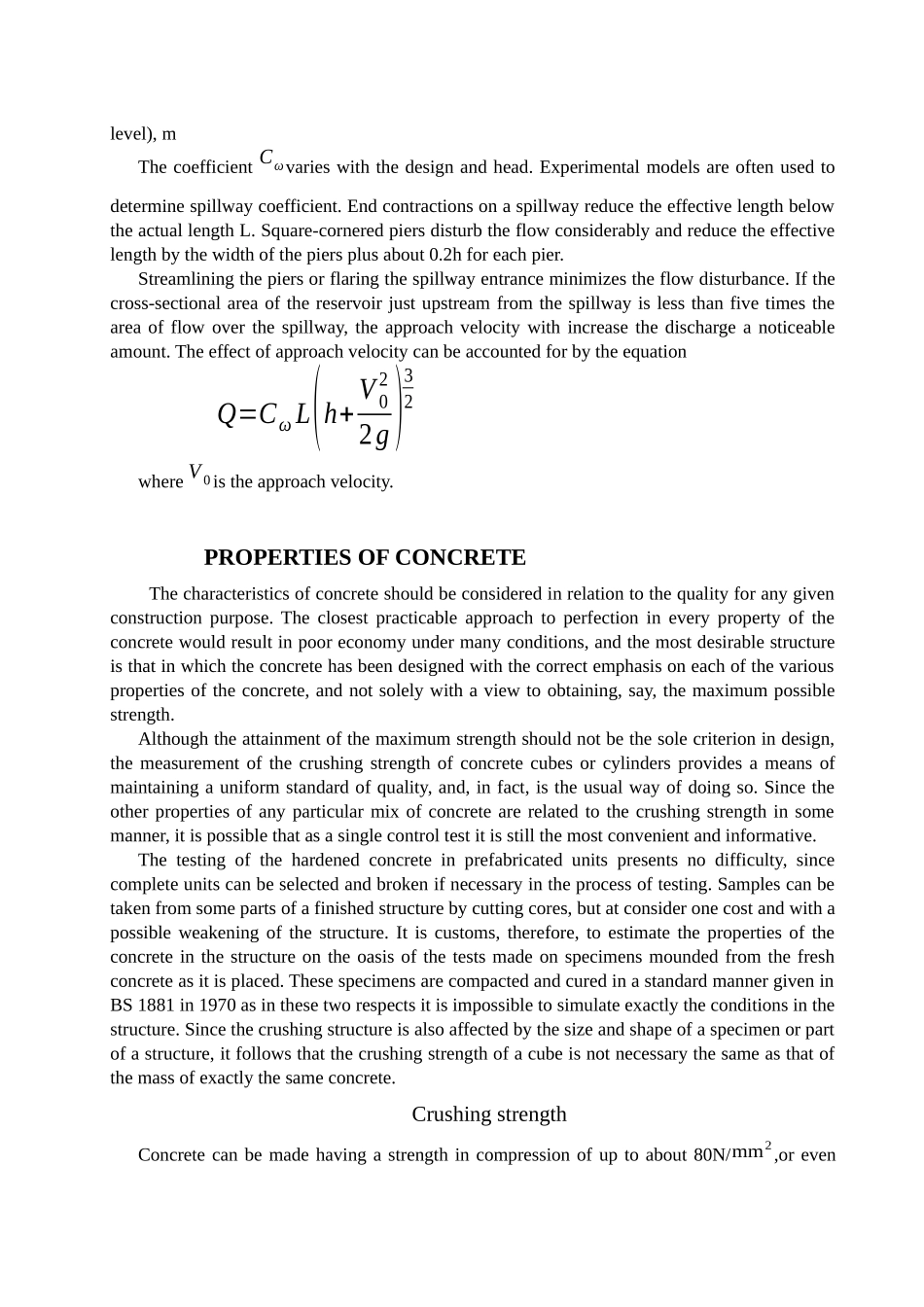OVERFLOW SPILLWAYAn overflow spillway is a section of dam designed to permit water to pass over its crest. Overflow spillways are widely used on gravity, arch, and buttress dams. Some earth dams have a concrete gravity section designed to serve as a spillway. The design of the spillway for tow dams is not usually critical, and a variety of simple crest patterns are used. In the case of large dams it is important that the overflowing water be guided smoothly over the crest with a minimum of turbulence. If the overflowing water breaks contact with the spillway surface, a vacuum will form at the point of separation and cavitations may occur. Cavitations plus the vibration from the alternates making and breaking of contact between the water and the face of the dam may result in serious structural damage.Cavities filled with vapor, air, and other gases will form in a liquid whenever the absolute pressure of the liquid is close to the vapor pressure. This phenomenon, cavitations, is likely to occur where high velocities cause reduced pressure. Such conditions may arise if the walls of a passage are so sharply curved as to cause separation of flow from the boundary. The cavity, on moving downstream, may enter a region where the absolute is much higher. This causes the vapor in the cavity to condense and return to liquid with a resulting implosion, or collapse, extremely high pressure result. Some of the implosive activity will occur at the surfaces of the passage and in the crevices and pores of the boundary material. Under a continual bombardment of these implosions, the surface undergoes fatigue failure and small particles are broken away, giving the surface a spongy appearance. This dama...


